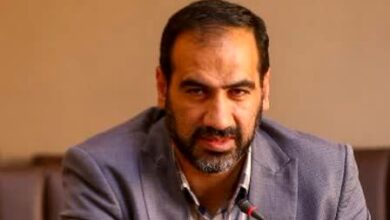Academic Language Instruction for Early Elementary Pupils
Pupils require a foundation that is strong age-appropriate language to assist their comprehension and phrase within the class room and help them towards engaging with an increase of complex language while they progress through school. For early primary students who will be learning how to read, educational language may be taught via dental language instruction. As students’ reading abilities develop, they could apply their knowledge to text. Educators can leverage younger students’ natural enthusiasm for learning brand brand new terms and taking part in talks to show vocabulary and syntactic skills utilising the after strategies:
Foster a language-rich class that includes possibilities for pupils to master thereby applying brand brand brand new language when after guidelines, explaining, taking part in conversations, and paying attention and giving an answer to http://payforpapers.net tales.
Provide explicit instruction in term relationships and groups, high-utility language ( ag e.g., spatial, relational, temporal, and descriptive terms), and words that are content-area.
Teach word-learning approaches for acquiring brand new language, such as the utilization of sentence-level context clues and term analysis skills.
Demonstrate self-monitoring of comprehension whenever experiencing language that is complex a few ideas in texts read out.
Academic Language Instruction for Upper Elementary and Secondary Pupils
As pupils approach 3rd grade and beyond, extracting meaning that is relevant reading gets to be more essential but challenging as students encounter texts which can be increasingly complex and diverse (Nagy & Anderson, 1984). To meet up these challenges, upper primary and additional pupils require instruction in more advanced scholastic language skills, including advanced vocabulary and grammatical structures. In specific, instruction in phrases and words containing Greek and Latin term components are necessary to scholastic success (Corson, 1997), as 60–۹۰% of terms found in educational contexts have these types. Illuminating the bond amongst the root “struct” together with terms “instruct,” “construct,” and “destruction” not just provides an integral towards the concept of the words, but could also encourage pupils to activate with future novel words within an manner that is inquiring. Educators can really help older students develop their vocabularies, learn approaches to reason about unknown words, and think critically by what they’ve read with all the strategies that are following
Teach pupils in regards to the morphological framework of terms (prefixes, suffixes, and base/root words) and exactly how terms are accompanied together. Transitioning students’ thinking from “I don’t understand the concept of this word” to “ exactly What components of this term do we recognize?” has got the possible to build an even more active approach in a student’s response to talked and written language.
Before students class that is read, preview and pre-teach vocabulary which will be very important to their comprehension associated with text, and supply semantic maps (graphic organizers or “webs” that connect brand new language to relevant terms and ideas) whenever teaching brand brand new terms.
Combine exposure and modeling with guided practice and separate, duplicated dental and written application.
as well as developing language, pupils require explicit instruction into the techniques words connect with other terms, expressions, and ideas; brand new terms needs to be discovered and used alongside the language structures within that they look (Nagy and Townsend, 2012). With possibilities to read, write, state, and hear language that differs in kind and function across contexts, students can internalize syntactic knowledge abilities. In particular, focusing on connective (or “signal”) phrases and words in text might help pupils interpret relationships between a few ideas within and across sentences, explain whatever they have previously look over, and offer clues to what they shall read. To instruct syntax abilities, educators may use the following methods:
Whenever texts that are discussing mentor pupils through this is of sentences that want careful interpretation, specially those who need connections or inferences about numerous tips.
Offer pupils with phrase frames that chunk complex sentences into significant expressions and sjust how how alterations in term option and order affect meaning, subject-verb contract, and pronoun use.
Enhance classes and conversations making use of language that is academic images, video clip, along with other multimedia to greatly help pupils with language weaknesses link meaning and function to principles and their present back ground knowledge.
Through targeted evaluation and explicit instruction in educational language, educators have actually the ability to impact students vocabulary that is, syntactic knowledge, and, later, their reading comprehension. Even though this instruction is specially crucial for struggling visitors and English Language Learners, all pupils can benefit from targeted instruction when you look at the terms, expressions, and kinds that constitute scholastic texts and conversations. While teachers’ classroom practices help students independently, college leaders can bolster language gains through collection of curriculum, assessment, and expert development opportunities that target this objective. an unified objective around educational language assists districts and schools improve pupils’ odds of academic success and offers pupils using the tools they must understand their globe, at school and beyond.






